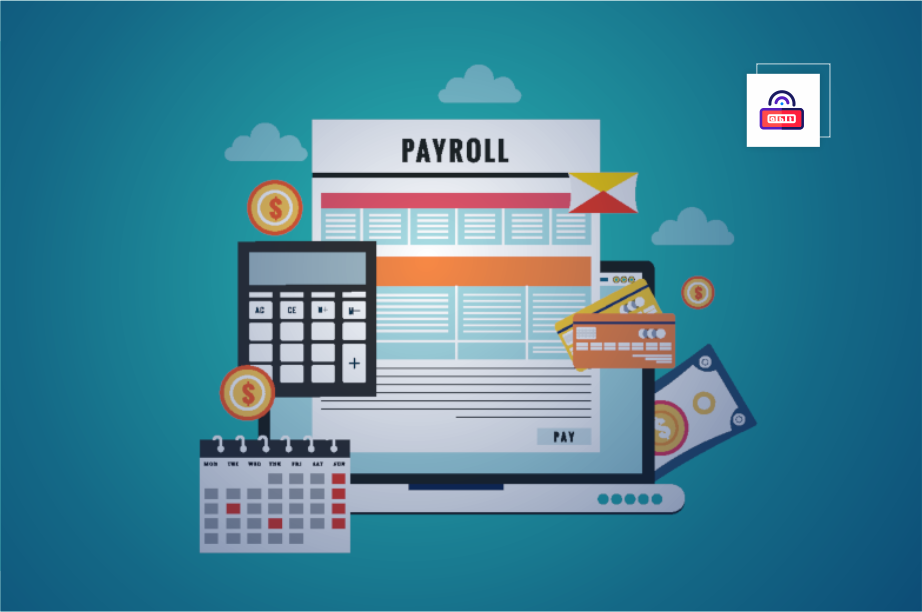All payments to your employees are managed through the payroll procedure. It comprises your payment schedule, payroll tax returns, the full names of your employees, their wages, and information regarding employee compensation.
Payroll is necessary for all small businesses in order to handle tax preparation, timely wage payments, and bookkeeping.
When you launch a small business, setting up payroll might not be the first thing that comes to mind. Yet, you’ll require a strong payroll system as soon as you bring on your first employee.
You’ll learn how to set up payroll for your small business in this post.
How to Setup Payroll in Your Small Business
- Know the employment laws at the state and federal levels.
- Make a payroll schedule decision.
- Construct a payroll policy.
- Fill out an application for an employer identification number.
- Choose an Administrator for Your Company’s Payroll.
- Organize employee paperwork
1. Know the employment laws at the state and federal levels.
Understanding the numerous local and state rules that are relevant to small businesses is the first step in the payroll process. You must familiarize yourself with the pertinent laws in the US before setting up payroll for your business.

In this situation, many federal and state rules, such as the Family and Medical Leave Act, minimum wage legislation, and employment tax rates, are applicable.
The U.S. Department of Labor website is a fantastic location to get started. You can use the materials available here to better understand and abide by the federal employment regulations. You should also be familiar with the payroll laws that your state uses to control small enterprises.
2. Make a payroll schedule decision
A payroll schedule is a calendar that indicates how frequently an organization pays its employees. While some small businesses opt to pay their staff on a weekly or biweekly basis, others decide to make direct payments on a semi-monthly or monthly basis.
It would be preferable if you didn’t select a paycheck schedule based solely on your memory. Examine the pertinent laws first. Your company’s cash flow is another factor to take into account here. If the majority of your cash intake occurs at the end of the month, you should think about setting up a regular payroll schedule.
Make sure to choose a pay schedule you can readily adhere to because many state and federal income tax regulations have strict penalties for paying salaries late.
3. Construct a payroll policy
Create a payroll policy or employee handbook for your company after deciding on a pay month. A formal document known as an employee handbook outlines the various policies for managing firm payroll, including the payment schedule, employee benefits, and payroll methodology.
One of the crucial phases in this setup is to draft a payroll policy because it assists business owners avoid many obligations. Payrolls have a direct impact on employees, so they need to be aware of how the company intends to handle the process and whether their benefits will be impacted in any way. A thorough employee handbook aids businesses in processing payroll efficiently.
A payroll policy should not be interpreted as a contract between a company and its employees. Before distributing the paper to your employees, ask an employment law specialist to check it and make sure everything is in order.
4. Fill out an application for an employer identification number
You already have a Social Security number as a small business to use when submitting your taxes.
Nevertheless, in order to conduct payrolls, you must an Employer Identification Number (EIN). On the IRS website in the United States, businesses can apply for an EIN.

Your EIN serves as your employer tax ID after it is assigned to you, and you can use it to complete any business tax forms. Even if you don’t immediately start setting up payroll, you still need an Employer ID number for a variety of transactions.
You might also be required to file state income taxes on behalf of your employee(s), depending on the tax regulations in your state. You must submit applications for state withholding and unemployment tax accounts in this situation. Find out if these conditions apply to you because some local governments provide distinct ID numbers to businesses for the purpose of filing payroll taxes.
5. Choose an Administrator for Your Company’s Payroll
Payroll administration requires a lot of work, and many small business owners find it difficult to juggle it with their daily obligations. This duty can be delegated internally to a reliable individual, outsourced to a bookkeeping and accounting firm, or handled via payroll software like Gusto.
It would be better if you examined the advantages and disadvantages of each choice before deciding. For instance, an online platform for processing payroll will automate the majority of the work so you have more free time.
As an alternative, payroll service providers can handle all of the operations with little to no involvement from the small business owner while being rather pricey.
6. Organize employee paperwork
Employers must obtain certain information from new workers and update the payroll data for current employees in order to complete the payroll setup. These data points consist of:
- A W-4 form that has been fully completed to determine how much federal income tax should be taken out of the employee’s paycheck on payday.
- A fully filled-out Form I-9 to confirm the worker’s right to employment in the US. Your employees will need to present a formal form of identity in this situation, and you should preserve copies of these records.
- Verify your social security number to prevent name and SSN discrepancies. Employers can use the Social Security Number Verification Service for free; all they need to do is register.
- You might need to submit new hiring documentation to the appropriate authorities depending on the local legislation in your state.
Conclusion
Payroll first appears difficult, but you can do it correctly. The straightforward payroll advice in this article will make it easy for you to set up payroll for your small business.
Managing all of your employees’ payments is done through the payroll procedure. It contains the complete names of your employees, their wages, details about employee benefits, your payment schedule, and payroll tax reports.
Payroll is a crucial component of any small business since it enables them to handle tax preparation, timely salary payments, and bookkeeping.
SOURCE: Freshbooks Hub




